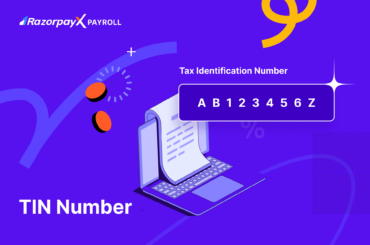Amid the rise of the gig economy and tax reforms, switching to an automated payroll software has become a necessity of the times. And, we’ll tell you why.
From human errors in complex calculations to botched payroll data on excel sheets, manual payroll processing gets out of hand sooner or later. Instead of waiting for things to go wrong, making a timely transition to a feature-loaded automated payroll software will be one of the best business decisions you make.
Table of Contents
Why you need to switch to an automated payroll software
Running payroll manually has always been a difficult task. And now, with an all-new dual tax regime and increasingly complex payroll calculations, manual payroll management can create many administrative roadblocks.
This is especially true for small businesses that may run into payroll management troubles due to statutory compliance issues. If not remedied soon enough, manual payroll could severely damage their efficiency and productivity, demanding hours upon hours of work. Besides, human errors make the job much harder.
Worse still, your business would have to either overwork your existing employees in the process as the business grows, or hire more employees for the same job. Your employees who could be contributing to the productivity of the organisation in multiple ways may end up getting bogged down with payroll processing.
[Suggested reading: 7 Reasons Why Your Payroll Process is Flawed]
When to transition into an automated payroll software
There is no right or wrong time to amp up your payroll. The answer is always NOW.
You may wonder if moving your data from a manual system to an automated system will take up all your time. It may seem like there’s too much going on at the beginning. But believe us, it will be well worth it.
So, we discussed the pain points of the manual process. But, until when is it okay for you to keep your payroll running manually? When do you know for sure, that you need to change over to an automated one? Here are some signs you should look for.
- You don’t think the way you manage your employee data is secure
- Your finance team spends more than half of their bandwidth on payroll processing every month
- Your payroll team starts having hiccups because of multiple spreadsheets and complex formulae
- You need to hire someone who is specifically skilled to make sure all your payroll calculations are compliant with the latest tax laws
- Your organisation has grown significantly and your payroll team cannot keep up anymore
- The dual tax regime has brought about an added number of manual hours
- Keeping track of your employees’ documents is becoming a challenge
After this, there is no longer a reason not to make a quick switch to automated payroll.
How to transition into an automated payroll software
Making the switch may be quite a task especially if you don’t know where to start. So, here’s a handy step-by-step guide to walk you through the transition.
Step 1: Choosing the right automated payroll software
To begin with, ask yourself what exactly you need from your payroll software. Make a checklist of all the features you’re currently looking for, as well as some features that you might want to use later, as your company grows.
Next, look for payroll software that meets your specifications. When you shortlist a few contenders, look at their ease of use, degree of support from the service providers, and trial period. Most importantly, don’t forget to check for compliance with the latest tax reforms like the dual tax regime introduced earlier this year.
When you arrive at the right software, ask the service provider for references from clients whose business is similar to yours. This is not to say that a software service provider that has never been used by a similar business is a bad choice. If the software fits well in your scheme of things, go right ahead.
If the references are in order and you are satisfied, then do a dry run. The trial will let you get a feel of the software and help you make the final call, on whether to switch over or look for another option.
Step 2: Brace for impact – adopting the automated payroll software
The employees of any organisation have a tendency to resist change. Your organisation may prove to be no exception. There may be a general unwillingness to disturb the status quo among your employees for a variety of reasons.
Say, your payroll software has a feature wherein all employees are required to upload documents for reimbursements, onboarding, and other purposes. This may not sit well with the employees who do not know how to navigate through the software. They may be more comfortable giving paper-based documents to the payroll team.
Sharing a list of frequently asked questions may help educate your employees. Explaining why the payroll software is necessary and how it benefits each employee on a personal level will also help them accept the change.
Step 3: The real deal – switching to your automated payroll software
The trial run is done, the contract has been negotiated. There is a mutual understanding between you and your software service provider.
It is time to begin the transition.
Ask the payroll team to round up every tidbit of payroll-related data from all your employees. Going data hunting midway through the transition will be very tedious for both you and your service provider. So, it would be better to arm yourself with all the relevant information right from the start.
The transition may look like a perplexing process, so make sure you seek clarification for all your doubts, however trivial, from the onboarding team.
Finally, once the data has been fed into the new software, have someone from your payroll team go over it to check for errors. Making corrections later, although not impossible, might be inconvenient.
Now that your payroll software is up and running, encourage your employees to explore its features. You could even have a short tutorial on how to navigate the software and use its features once all your employees have access to it.
The right automated payroll software for you
From hours of manual labour to human errors in calculations, having the medieval practice manual payroll processing will do your organisation no good. Delayed salary payments, inaccurate reimbursements and loss of documents throw a spanner in the works and hit employee morale at the same time.
Now that we have told you the problem, let us bring you the solution too.
We, at RazorpayX Payroll, have decoded what it means to have an effective payroll system.
RazorpayX Payroll is a top-notch payroll solution which lets you automate every fragment of your payroll process seamlessly. With a snazzy intuitive dashboard, RazorpayX Payroll is so user-friendly that your employees can have it up and running in under 30 minutes. All you have to do is get your data into the software and let RazorpayX Payroll work its magic.
How RazorpayX Payroll works
RazorpayX Payroll maintains your balance. Think of it like a wallet into which you deposit your money. Once you load the money, it is used to carry out the whole array of payroll activities. Being highly intuitive and easy to use, RazorpayX Payroll takes away all the redundant steps to give you a seamless payroll experience.
What’s more – you don’t have to worry about TDS, PF, ESI, and professional taxes, ever again. Plus, your employees are always paid on time! You can also pay your contractors and pay TDS automatically. RazorpayX Payroll deals with quarterly filings, form 16s, and 24Q.
RazorpayX Payroll gives more power to your employees by allowing them to claim their reimbursements and tax exemptions on their dashboard, based on which their monthly payroll is adjusted automatically.
The icing on the cake? RazorpayX Payroll is dual tax regime compliant!
Over to you
Manual payroll is passé. Automated payroll software are here to stay, armed with solutions to all payroll problems imaginable. You are one step away from dispelling your monthly administrative woes for good- just follow the steps above, and you’re ready to (pay)roll!





